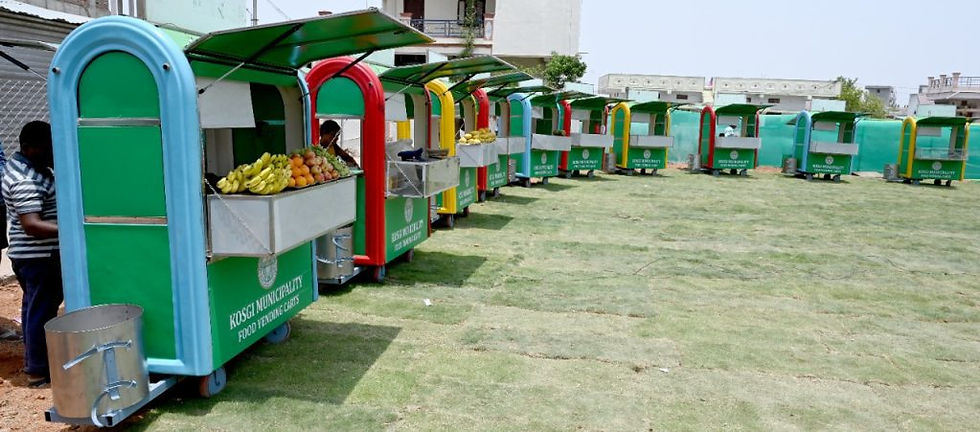Streamlining Street Vending
- connect2783
- Nov 21, 2023
- 2 min read
Updated: Jul 18
Street vending in Indian cities walks a tightrope between livelihood and legality. While cities like Bengaluru and Thiruvananthapuram experiment with thoughtful vending zones, others wrestle with relocation woes and poor infrastructure. Activists push for inclusive planning, but implementation lags behind. As civic bodies navigate contested footpaths, vending zones remain a work in progress.
Are street vendors getting the right space?

Citizen activist Qaneez Sukhrani has been urging the Pune MC to create vending zones for the last 5 years. Advocating for designated areas for licensed vendors, she is aiming to streamline vending activities, enhance pedestrian safety, and reduce traffic.
Street vendors often find themselves in a precarious position, as they are viewed as a nuisance encroaching on pedestrian spaces.
The Street Vendors (Protection of Livelihood and Regulation of Street Vending) Act was enacted in 2014 to safeguard the rights of street vendors, giving them a legal framework to operate without eviction fears. Yet, the implementation remains a challenge.
In Dehradun, authorities are struggling to build effective vending zones. Vendors suffer due to flawed zone design and lack of proper water, electricity, and waste management facilities. In Noida, mandated vendor relocation to zones has led to mixed reactions. Decongestion and protection from eviction have provided relief, but many suffer from mounting losses after being placed in distant areas within zones.

To ease such complexities, diverse stakeholder interests have to be considered during planning. Well-represented Town Vending Committees (TVCs) are vital for enforcing hawker policies. While there are certain guiding principles to set up vending zones, TVCs should survey to estimate local requirements.
In Bengaluru, after a successful pilot project led by architect Aakarsh Shamanur with BBMP, the Sanjayanagar locality established a permanent unit for street food vendors. The shift to a pedestrian-only street during evenings, along with hygiene facilities, had been backed by solar-powered technology. Similarly, Thiruvananthapuram Corporation launched a night market at Putharikandam, ensuring security with police oversight.
Regularisation, when done properly, can enhance public safety and create vibrant spaces that benefit both communities and vendors.
Comments